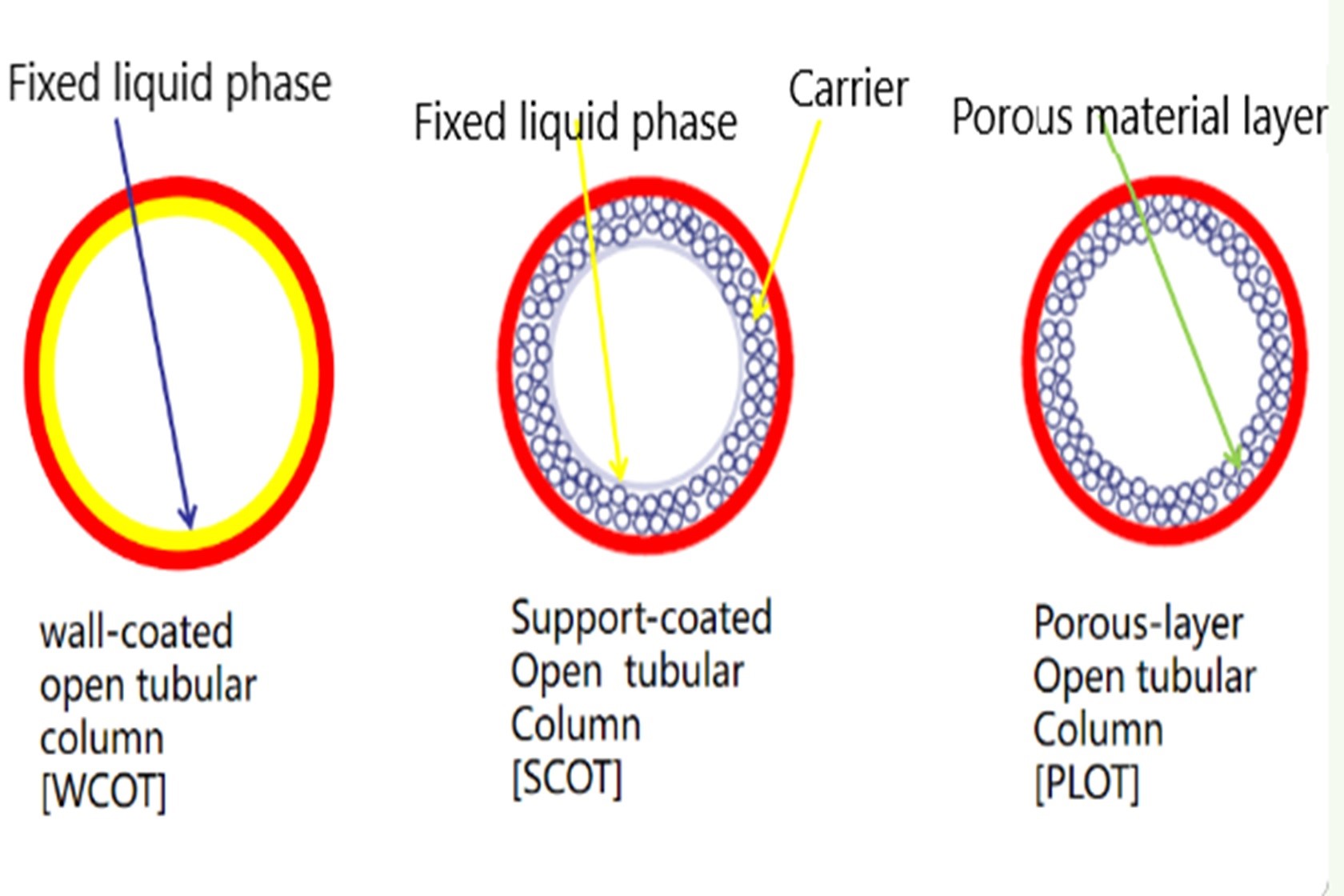Gas chromatography (GC) is a powerful analytical technique for the separation and identification of volatile compounds. The heart of the system is the chromatographic column, which plays a key role in the separation of sample components based on their interaction with the stationary phase. Capillary columns have replaced packed columns in many modern applications due to their high efficiency, faster analysis speed, and better sensitivity. These columns are made of long, narrow tubes (typically 10–100 m) with an internal diameter of 0.1–0.53 mm, and the stationary phase is coated as a thin layer on their inner wall. In this article, the main types of capillary columns and their unique characteristics are reviewed.
Types of capillary columns
Capillary columns are divided into the following categories based on their physical structure and type of stationary phase:
1. Wall-Coated Open Tubular (WCOT) Capillary Columns
-
Structure: The stationary phase is coated as a thin layer (0.1–5 μm) on the inner wall of the column. These columns are made of glass or fused silica.
-
Advantages:
-
High resolution due to small diameter and long length.
-
Suitable for separating compounds with close boiling points.
-
-
Disadvantages: Low loading capacity (highly concentrated samples may cause overload).
-
Applications: Analysis of volatile organic compounds such as perfumes, hydrocarbons, and pharmaceuticals.
2. Porous Layer Open Tubular (PLOT) Columns
-
Structure: The stationary phase is a porous layer (such as alumina, zeolite, or porous polymers) that is placed on the wall of the column.
-
Advantages:
-
High active surface area for physical adsorption of compounds.
-
Suitable for separation of permanent gases and light hydrocarbons.
-
-
Disadvantages: Possibility of stationary phase degradation at high temperatures.
-
Applications: Analysis of natural gases, hydrocarbon isomers and polar compounds such as CO2 and H2S.
3. Support-Coated Open Tubular (SCOT) capillary columns
-
Structure: A layer of solid particles (such as silica gel) is coated on the wall of the column and the stationary phase is placed on this layer.
-
Advantages:
-
Higher loading capacity than WCOT.
-
Good thermal stability.
-
-
Disadvantages: Lower resolution than WCOT.
-
Applications: Separation of medium to high molecular weight compounds, such as fatty acids.
4. Fused Silica Open Tubular (FSOT) columns
-
Structure: Fused silica columns are made of fused silica with a polyamide coating to protect against breakage.
-
Advantages:
-
High flexibility and durability.
-
Resistance to chemical corrosion.
-
-
Applications: Widely used in GC-MS due to its compatibility with vacuum conditions.
-
Comparing capillary columns to packed columns
Feature Capillary Column Packed Column Features Capillary Column Packed column Analysis time Shorter Longer capacity Low high Temperature range Wide Limited Cost High Low



